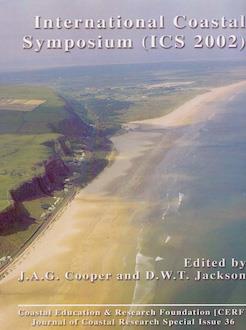Wind-abraded rocks (ventifacts) are common coastal features associated geomorphically with beaches, estuary mouths and sand dunes. This paper compares evidence for ventifaction from similar coastal settings in Donegal (Ireland) and Oregon (USA) and considers their implications for coastal sediment dynamics. Ventifacts on a bedrock platform at Gweebarra Bay, Donegal, show pit and groove ventifact styles and are estimated to have formed over some < 2500 years. Ventifacts on a boulder jetty (built 1892–1901) on the Oregon coast, USA, show similar grooves and pits. Winds above the threshold for sand transport and possible abrasion are present for 28–30% of the time at both locations. Based on depth of rock loss, wind abrasion rates on the Oregon coast are 0.24–0.95 mm yr−1, two orders of magnitude greater than in Donegal. Coastal sediment fluxes on these coasts since the late Pleistocene have responded to sea-level fluctuations and changes in onshore sediment supply. Sediment systems are presently less dynamic than in the past, and some coastal geomorphic features may be largely relict.
How to translate text using browser tools
1 March 2002
Wind abrasion (ventifaction) on Donegal and Oregon coasts and implications for the sediment dynamics of coastal systems
Jasper Knight

Journal of Coastal Research
Vol. 36 • No. sp1
Spring 2002
Vol. 36 • No. sp1
Spring 2002
Coastal forcing
Sea level change
sediment systems
ventifacts




